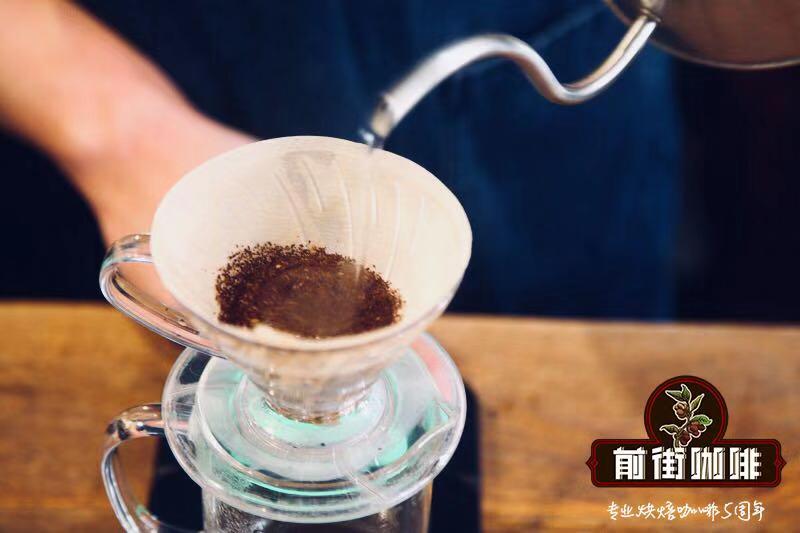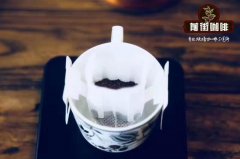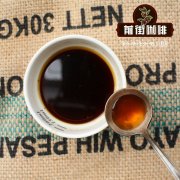How to describe the flavor of coffee | know how to describe the taste of coffee.

Professional coffee knowledge exchange more coffee bean information please follow the coffee workshop (Wechat official account cafe_style)
Acidity (acidity)
It is the sour and strong quality of all coffee grown on the plateau. The acid in coffee is divided into good acid and bad acid. Good acid makes people feel pleasant and smooth, and acerbic and over-stimulating usually make people frown. Acid is the most easily identifiable trait in coffee flavor. Cherry, lemon, peach, apple and other fruit acids give coffee rich personality.
The varieties of coffee beans with outstanding acidity are: Kenya, Yega snow coffee, Costa Rican honey treatment and so on.
-
Sweet (sweet)
Sweet refers to the taste of sweet and sour fruits such as oranges and tomatoes. You can also drink caramel, honey and chocolate in coffee. The combination of sour and sweet in the hand is a very beautiful taste bud experience! Honey-treated coffee beans on the market are very sweet and very popular.
Bitter (bitter taste)
When you hear about the bitterness, you may think that the bitterness of coffee is the worst. In fact, no, for example, chocolate is also bitter, but we love it very much, because there are many kinds of bitterness in the flavor. What we call "bitter" usually refers to the "sweetness and bitterness" of coffee.
Aroma (odor)
The sense of smell is the first feeling in taste. Refers specifically to the taste of ground coffee powder. Aroma is usually specific and comprehensive. The words used to describe Aroma include: caramel, carbon roasted, chocolate, fruit, grass, malt, rich, rich, spicy, etc. Coffee aroma is divided into: dry fragrance, wet fragrance.
Body (alcohol)
After drinking the coffee after conditioning, the taste of the coffee is left on the tongue. The change of mellowness can be as light as water to light, medium, high, fat, and even some Indonesian coffee is as thick as syrup.
Alcohol degree (body)
The physical properties of the drink, the texture of the skin in the tongue and mouth during drinking. It is mainly affected by insoluble components.
Light (light), thin (thin)
There is a relatively small amount of insoluble gum in coffee. The emergence of this situation is also mainly related to the low ratio of coffee to water when making coffee. The result of a small number of coffee fiber particles and insoluble proteins.
Smooth (smooth)
There is a medium amount of insoluble gum in coffee. The whole is in a state of balance, neither thin nor heavy.
Heavy (heavy)
Coffee contains more than medium amount of insoluble colloid, coffee fiber particles and insoluble proteins.
Thick (thick)
There is a large amount of insoluble gum in coffee. Espresso often has this characteristic. This is the result of the presence of a large number of coffee fiber particles and insoluble proteins.
Creamy (creamy)
Caused by oily substances suspended in coffee. It is creamy because there is a lot of fat in the coffee. Espresso has this characteristic.
END
Important Notice :
前街咖啡 FrontStreet Coffee has moved to new addredd:
FrontStreet Coffee Address: 315,Donghua East Road,GuangZhou
Tel:020 38364473
- Prev

Which is the best manual coffee grinder | Brand recommendation of manual coffee grinder
Professional coffee knowledge exchange more coffee bean information please follow the coffee workshop (Wechat official account cafe_style) AKIRA Taiwan fuselage material: log grinding core material: cast iron characteristics: modeling retro bean warehouse: 45g Japanese KALITA brand hand shaker bean mill is also similar to this one, wood + cast iron sleeve group, because marked [Taiwan origin], so the two are actually similar.
- Next

Is there a place to grow Arabica beans in China? are Arabica coffee beans expensive?
Professional coffee knowledge exchange more coffee bean information Please pay attention to Coffee Workshop (Wechat official account cafe_style) although China has been growing coffee for more than 100 years, especially in the past few decades, the reality is that there is still little interest in Chinese coffee in the world. Fortunately, in recent years, the Chinese government, local manufacturers, multinational bakers, industry organizations, etc.
Related
- Beginners will see the "Coffee pull flower" guide!
- What is the difference between ice blog purified milk and ordinary milk coffee?
- Why is the Philippines the largest producer of crops in Liberia?
- For coffee extraction, should the fine powder be retained?
- How does extracted espresso fill pressed powder? How much strength does it take to press the powder?
- How to make jasmine cold extract coffee? Is the jasmine + latte good?
- Will this little toy really make the coffee taste better? How does Lily Drip affect coffee extraction?
- Will the action of slapping the filter cup also affect coffee extraction?
- What's the difference between powder-to-water ratio and powder-to-liquid ratio?
- What is the Ethiopian local species? What does it have to do with Heirloom native species?

